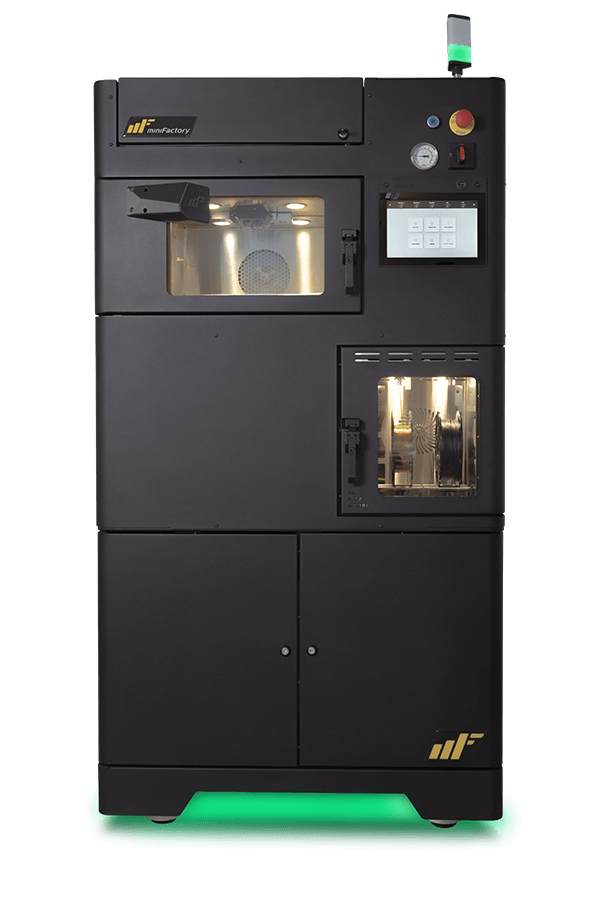Menu
close
3D printing in the medical industry enables the cost-effective production of mass-customized sterilization cases and enclosures by using industry-specific materials.
To improve the ergonomics of the professionals in the medical sector, 3D printing of high-performance polymers makes the manufacturing of application-specific assistive tools possible. For example, release mechanisms, latches, or supports can be manufactured from chemical-resistant materials.
With the miniFactory Ultra 3D printer, medical industry OEMs can achieve the flexibility of development and production with suitable materials to match the industry's strict regulations.
With miniFactory 3D printing technology, even the most challenging applications of the medical industry can be met using PPSU ultra polymers. PPSU offers the possibility to use all commercial sterilization technologies, including EtO gas, radiation, steam autoclaving, and plasma. With PPSU, the cases and enclosures can be sterilized with the same technology as the made products. In addition, the 3D printed parts can be exposed to repeatable sterilization cycles making it an excellent candidate for reusable medical devices.
3D printing in the medical industry offers significant weight reduction and design freedom over metals. As a result, medical devices can have complex geometries and lightweight structures with cost-effective production done on-site.
The medical field has an extensive wide portfolio of different applications and devices. On top of that, the hospitals have individuals from staff to patients with different needs and demands. This creates countless scenarios and customized demands for parts and accessories. With 3D printing in the medical industry, this demand can be matched with the freedom to do cost-effective mass customization. Each need for an accessory or a tool can be met by designing suitable parts that can be produced on-site, using standardized materials known by the medical sector. When the accessories can be tailored for the users and applications, the working ergonomics will improve noticeably and the safety and health of the employees and patients.
The materials used in these applications need to withstand different cleaning chemicals used frequently to maintain hygiene. By using high-performance polymers, you can ensure high durability for your parts.
The medical device manufacturing industry is a rapidly evolving and growing market. There is often a need for customized low-volume parts in manufacturing treatment equipment for which 3D printing is an excellent solution. High-performance polymers are durable, lightweight, and, for example, resistant to high temperatures and harsh chemicals, which enables their efficient utilization in equipment manufacturing.
3D printing with miniFactory Industrial 3D Printers can be done locally in a reliable and repeatable manner. In addition, 3D printing of high-performance polymers also opens up the possibility to do supportive products for the rapid development of other medical devices by creating a test jig, sterilization cases, or protective housings for the tested equipment.

Contact us and our specialists will be in touch shortly.
"*" indicates required fields